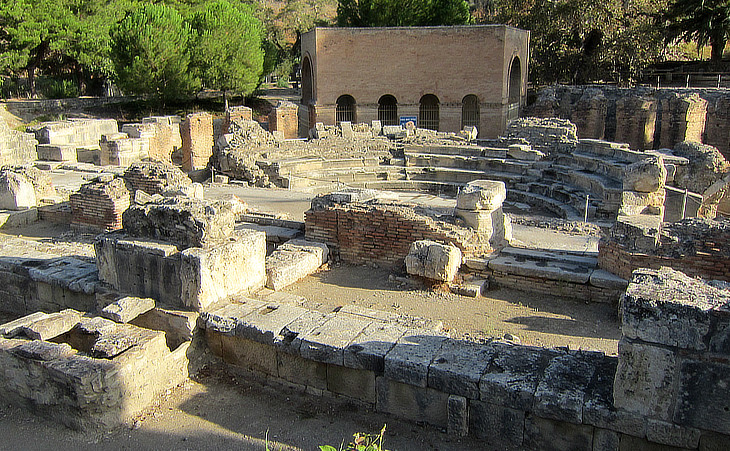Crete, the largest of the Greek islands, is a treasure trove of archaeological wonders that offer a fascinating glimpse into the island’s rich and varied past. From the grandeur of the Minoan civilization to the remnants of Roman and Byzantine influence, Crete’s archaeological sites tell the story of a region that has been at the crossroads of civilizations for millennia. This guide takes you on a historical journey through some of Crete’s most remarkable archaeological wonders.
The Minoan Civilization
1. Knossos: The Palace of Minos
Knossos is perhaps the most famous archaeological site in Crete and the center of Minoan civilization, which flourished around 2000-1400 BCE. Discovered by Sir Arthur Evans in the early 20th century, the palace complex is a labyrinth of corridors, storerooms, and grand halls, believed to be the inspiration for the myth of the Minotaur and the Labyrinth.
- Highlights: The Throne Room, with its alabaster seat and griffin frescoes; the vibrant frescoes depicting scenes of Minoan life; the Queen’s Megaron with its dolphin fresco; and the expansive Central Court.
- Visitor Tips: Arrive early to avoid crowds, and consider hiring a guide to fully appreciate the historical context and significance of the site.
2. Phaistos: A Glimpse into Ancient Administration
The Palace of Phaistos, located in southern Crete, is another major Minoan site, renowned for its impressive architectural design and administrative significance. The site offers spectacular views of the surrounding Messara Plain.
- Highlights: The grand staircase, the theatrical area, and the central courtyard. Notably, the Phaistos Disc, a unique clay disc with undeciphered inscriptions, was discovered here.
- Visitor Tips: Combine your visit with a trip to the nearby beaches of Matala or Kommos for a full day of exploration.
3. Malia: A Blend of History and Myth
The Palace of Malia is the third-largest Minoan palace and offers a fascinating glimpse into Minoan urban planning and architecture. It is less crowded than Knossos and Phaistos, providing a more serene exploration experience.
- Highlights: The impressive storage magazines, the central courtyard, and the royal apartments. The site also features numerous artifacts, including the famous gold bee pendant.
- Visitor Tips: Visit the nearby village of Malia for a taste of local cuisine and culture after exploring the archaeological site.
Post-Minoan and Classical Crete
4. Gortyna: The Roman Legacy
Gortyna, once a major city during the Roman period, is one of Crete’s most important archaeological sites. The city flourished under Roman rule and continued to be significant in the early Byzantine period.
- Highlights: The Basilica of St. Titus, the Odeon, and the famous Gortyn Code – an ancient inscription that provides insight into the laws and society of the time.
- Visitor Tips: The site is expansive, so wear comfortable shoes and bring water. The nearby village of Agioi Deka, named after the Ten Martyrs of Crete, is also worth a visit.
5. Aptera: A Fortress with a View
Located near Chania, Aptera is a significant archaeological site with ruins dating from the Minoan period through the Byzantine era. The site’s strategic position offers breathtaking views over Souda Bay.
- Highlights: The well-preserved Roman cisterns, the ancient theater, and the fortifications. The site also includes a monastery and the remains of a small Roman temple.
- Visitor Tips: Bring a camera to capture the stunning views, and consider visiting in the morning or late afternoon to avoid the midday heat.
Byzantine and Venetian Influence
6. Rethymno Fortezza: A Venetian Stronghold
The Fortezza of Rethymno is a Venetian fortress that dominates the town’s skyline. Built in the 16th century to protect against pirate raids and Ottoman invasions, the fortress is an excellent example of Venetian military architecture.
- Highlights: The bastions, the central square with its chapel, and the stunning views of the old town and the sea. The site also hosts various cultural events and performances during the summer.
- Visitor Tips: Explore the charming streets of Rethymno’s old town after your visit to the fortress.
7. Arkadi Monastery: A Symbol of Resistance
The Arkadi Monastery, located near Rethymno, is a symbol of Cretan resistance against Ottoman rule. The monastery played a crucial role during the Cretan Revolt of 1866 and is a site of national significance.
- Highlights: The ornate church, the martyrdom site, and the beautiful gardens. The monastery’s museum displays artifacts related to its history and the Cretan struggle for independence.
- Visitor Tips: Visit during the annual commemoration events in November for a deeper understanding of the site’s historical importance.
Conclusion
Crete’s archaeological wonders offer a captivating journey through time, from the enigmatic Minoan civilization to the island’s Byzantine and Venetian periods. Exploring these sites provides a deeper understanding of Crete’s rich history and cultural heritage. Whether you are wandering through the ancient corridors of Knossos, marveling at the Roman remnants in Gortyna, or standing in awe of the Venetian Fortezza, each site reveals a unique chapter of Crete’s storied past. Embrace the opportunity to delve into this historical journey and discover the archaeological treasures that make Crete an unparalleled destination for history enthusiasts and curious travelers alike.


